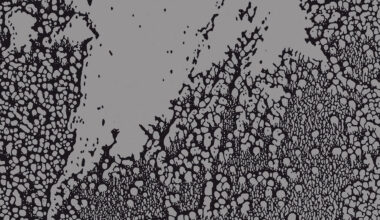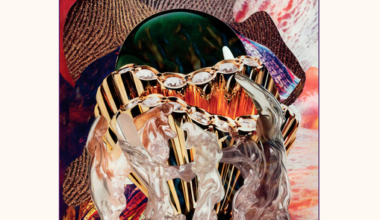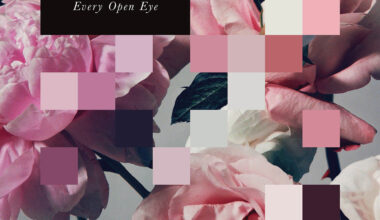EXHIBIT A

While it might be expensive (the ultra-fancy plexiglass CD set is north of £300, although there is a £50 version too) this ravishing boxset is a compelling argument for the art school tradition of the 1960s and 70s: free tuition, a grant and three years to fart about thinking about tape machines. You know, the kind of environment that shapes a person who points a video camera at the sky for a week and turns his telly on one side to watch the results and composes music to accompany the wonky visuals and then parlays that into an international art career.
John Foxx remembers Brian Eno in the early 1970s, swooping exotically into the canteen of the Royal College of Art. “I don’t think I hallucinated it,” Foxx told me some years ago, “but I’m sure he appeared one day in the outfit with all the feathers…”.
Eno himself had studied at the Winchester School Of Art, graduating in 1969 with a head full of ideas, some inspired by a guest lecture from Pete Townshend, himself a graduate of Ealing Art College where he’d been turned onto electronic music thanks to a guest lecture by Malcolm Cecil. Ah, the concentric circles of influence and inspiration.
Townshend’s lecture at Winchester was about non-musicians making music with tape machines, a notion that chimed with Eno who at the time had already been fooling around with tape machines. He’d also had the bright idea of whacking tennis balls at naked pianos, creating a kind of random, chance-generated music based on a set of instructions any idiot could engage with – something like “Get a piano, take the wooden bits off, whack tennis balls at it, enjoy”. You can sense echoes of that particular sonic wheeze in Bloom, the generative music app he put together with Pete Chilvers in 2008.
This boxset is an attempt to pull together Eno’s music for his installations in a package that you might enjoy looking at as much as listening to. It’s Eno the artist rather than Eno the music guy centre stage here, but attempting to separate the two is futile.
The collection stretches back to 1985’s ‘Five Light Paintings’, which accompanied his installation ‘Pictures Of Venice’ at the Gallerie Cavallino in Venice, and projects Eno forward in time with the final disc, ‘Music For Future Installations’.
So does this (mostly previously unreleased) music work without the light paintings? It’s designed to occupy the aural space while his installations light up your brain via your eyeballs. And although this strand of Eno’s music doesn’t occupy space, it alters space, or rather it alters your perception of space. It doesn’t intervene or impose. It shifts and it progresses, but it does it discreetly, without drawing attention to itself.
In fact, some of it moves so slowly, you could be forgiven for thinking that it goes nowhere. You can ignore it and you can focus on it at the same time. As Eno himself says, “If you think of music as a moving, changing form, and painting as a still form, what I’m trying to do is make very still music and paintings that move. I’m trying to find in both of those forms the space in between the traditional concept of music and the traditional concept of painting.”
But ‘Kazakhstan’, which features on the opening disc, shimmers with heat haze and pulses across the stereo field. For the gradually unfurling Eno experience, head for the 44-minute ’77 Million Paintings’. But even there, particularly when listening with hi-tech 2018 headphones, you’ll find a lot more going on in this slow-moving piece than a casual listen reveals. It’s crammed full of effects, stretched voices and unearthly interventions, which teem with as much life as his recent album ‘The Ship’.
Perhaps the star of the show is the ‘Making Space’ disc. Of the nine tracks, the first half is playful and positively funky, recalling the likes of ‘Nerve Net’ and possibly even ‘My Life In The Bush Of Ghosts’ with the grooves of ‘Needle Click’ and the tinkling ‘Light Legs’. ‘Flora and Fauna/Gleise 581d’ could even be lifted from one of his 70s Moebius/Roedelius collaborations such as ‘After The Heat’, and it ends with ‘Delightful Universe (Seen From Above)’, a celestial seven minutes of booming beauty.
Are the art schools of today producing the Enos (and Foxxs and Townshends) of tomorrow? We sincerely hope so, but with a £40,000 student debt and London spaces priced beyond any feckless art student looking to mess about with music for a few years, he or she might think twice before treading their path.





